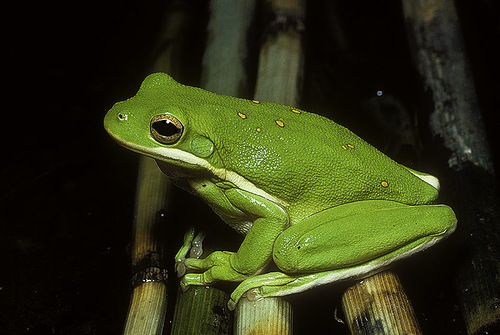
American Green Tree Frog
The American Green Tree Frog, Hyla cinerea, dazzles with its vivid green hue and striking stripes. This nocturnal amphibian thrives in southeastern U.S. wetlands, its toe pads perfect for climbing. A vital insect predator, it’s a charming yet crucial ecological player.
6 years
Lifespan
Distribution Range of the American Green Tree Frog
The green tree frog, scientifically known as Hyla cinerea, is native to the southeastern United States. Its geographical distribution includes states such as Florida, Georgia, South Carolina, North Carolina, Mississippi, Alabama, Louisiana, and eastern Texas. The range may occasionally extend northward into southeastern Virginia and westward to Arkansas and Iowa due to isolated populations.
American Green Tree Frog's Habitat
Environmental Conditions
Hyla cinerea typically inhabits regions with warm, humid climates. It can be found in a variety of wetland environments, including swamps, marshes, and the margins of ponds, lakes, and slow-moving streams. The climate in these areas supports a high level of humidity and temperatures that range from warm to hot in the summer months.
Ecological Niche
The green tree frog occupies an ecological niche as an arboreal amphibian. It is often associated with vegetation such as bushes, trees, grasses, and reeds near water bodies. This species is adapted to live in areas where there is abundant vegetation and water, providing both food resources, such as insects and small invertebrates, and breeding sites. The frog's green coloration offers camouflage among foliage, aiding in predation and evasion from predators.
Copyright @ Nature Style Limited. All Rights Reserved.
 English
English